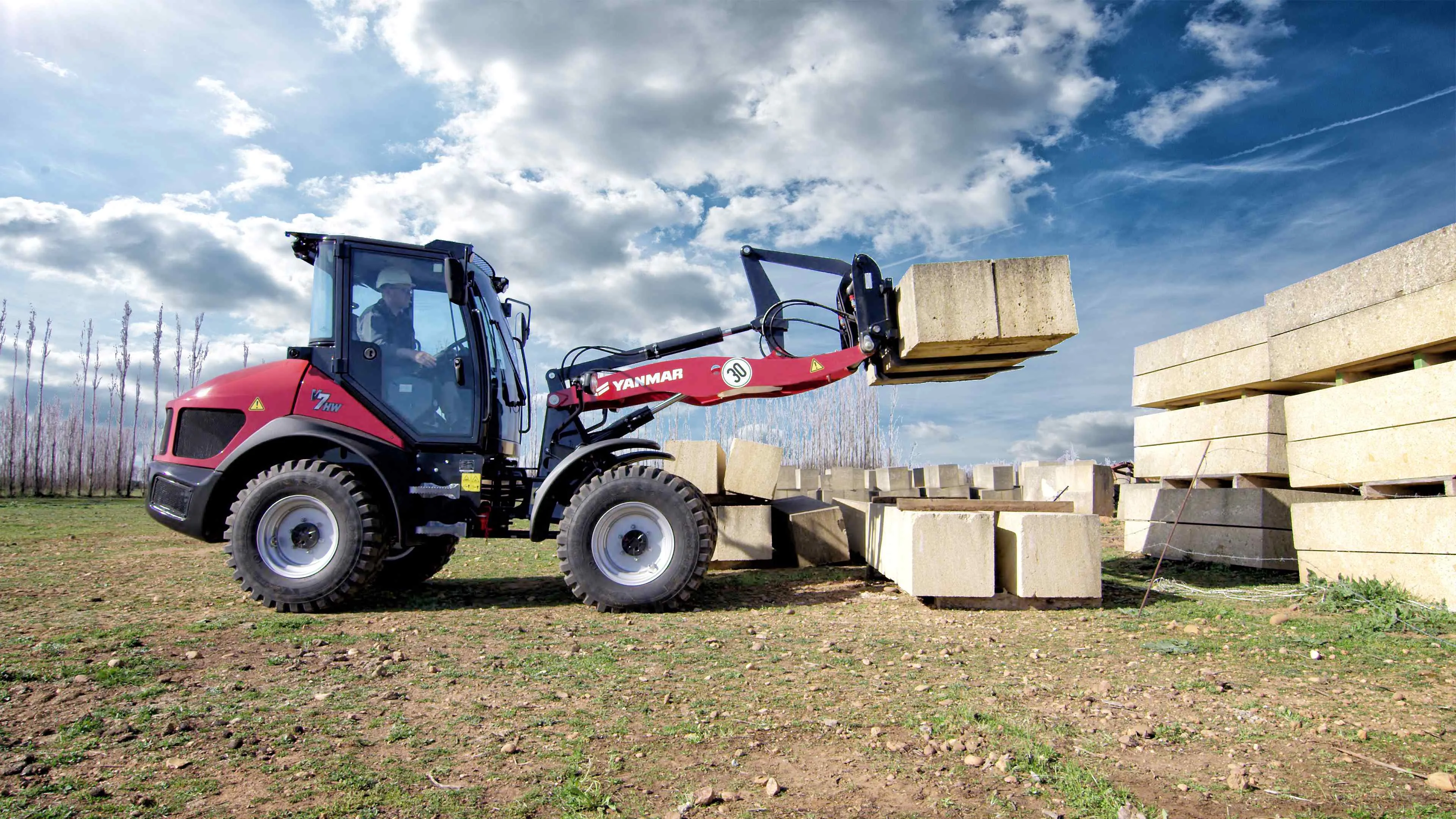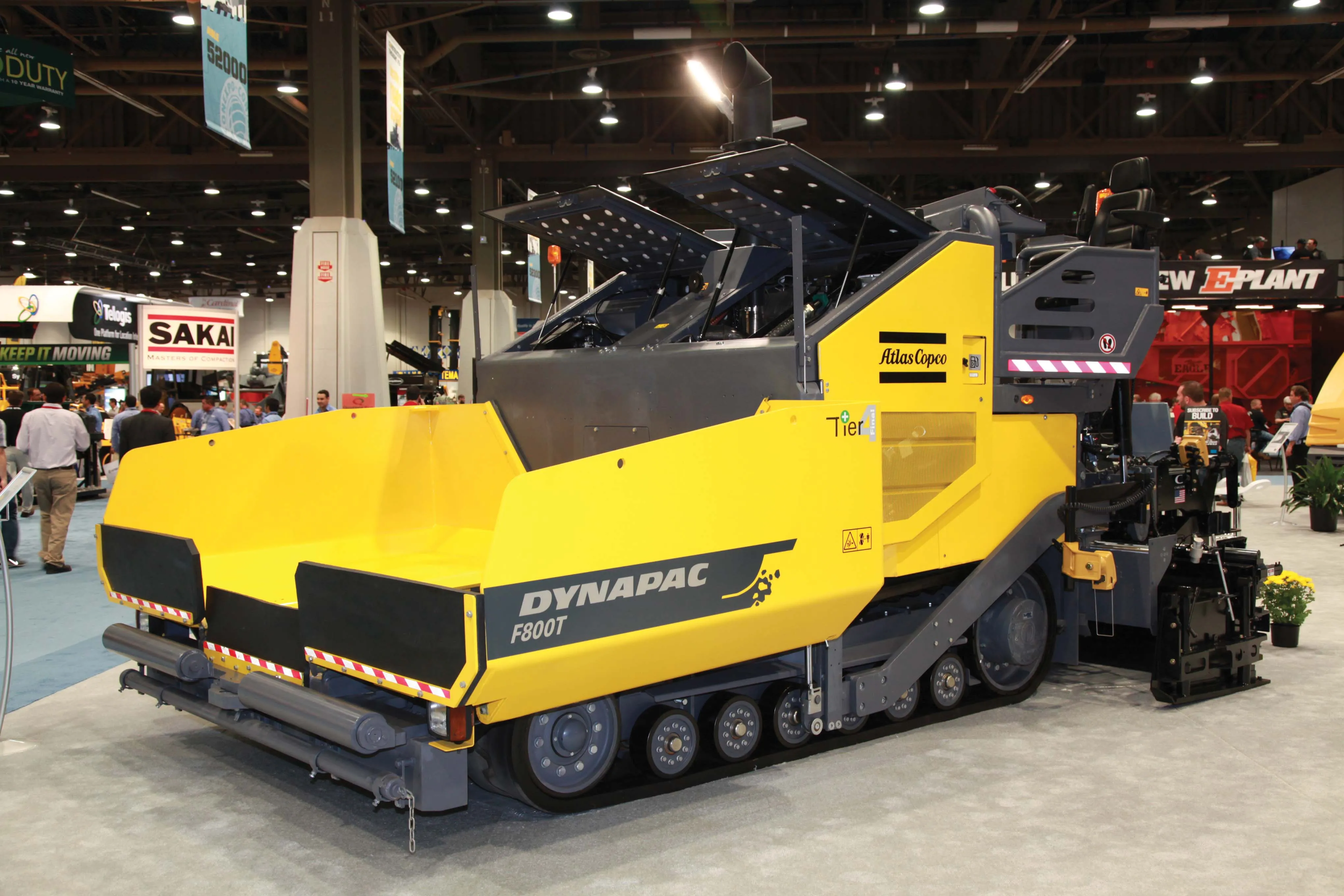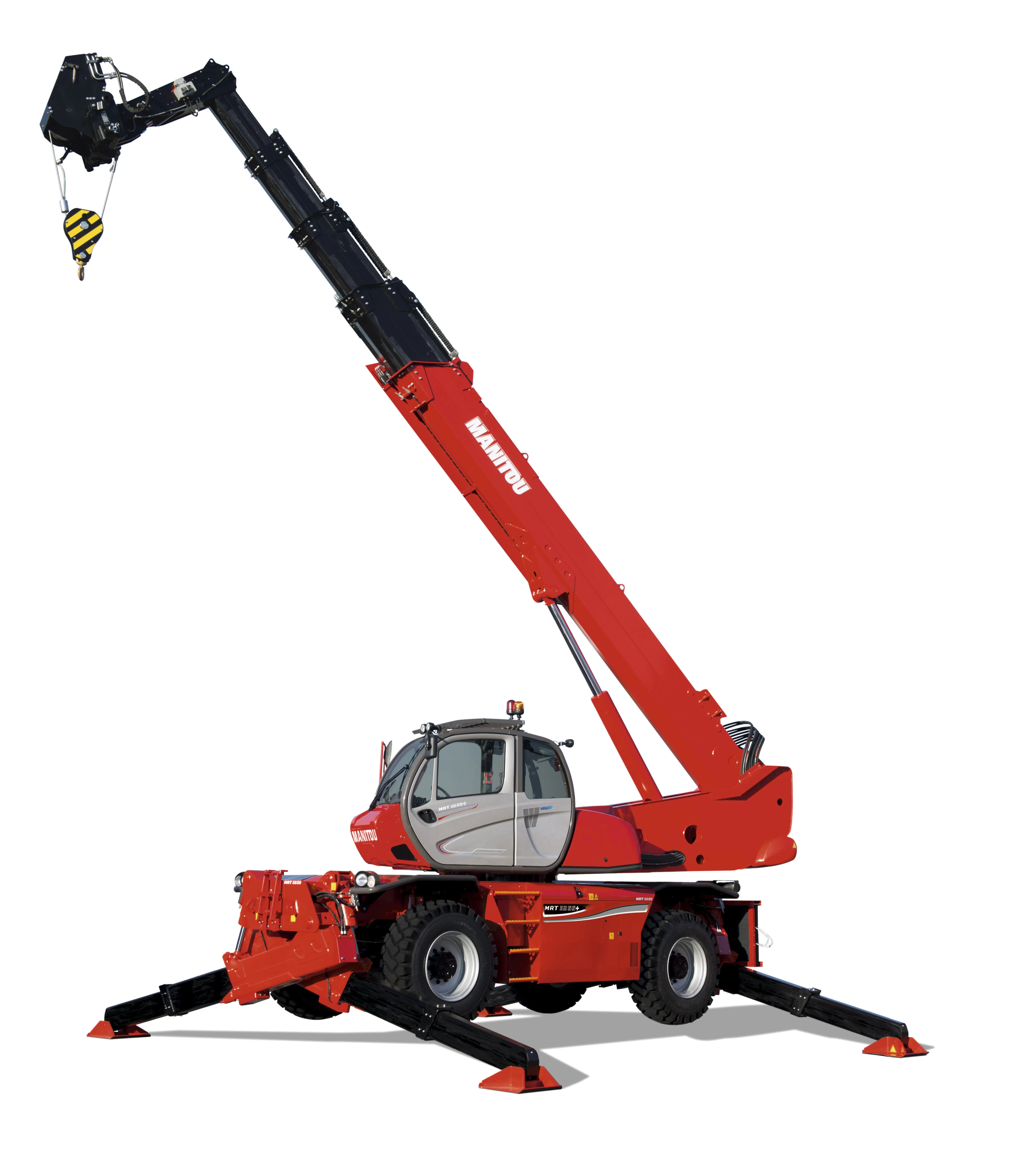
With a total height less than 2.5m, a width of 1,850mm (with bucket) and an overall length of just 5,238mm, the V7/V7-HW can fit inside a standard container.
The all-wheel drive V7/V7-HW both have an electronically controlled drivetrain, and a top speed of 20km/h; with 30km/h max speed available as an option. Customers can further customize their machines by choosing between a premium range of tyre brands and sizes.
The new V7/V7-HW also do away with exterior oscillation and instead feature a joint that combines articulation with oscillation, enabling the height of the machine to be lowered. The units weigh 4.25tonnes and 4.45tonnes respectively.
Using a new platform that can support both diesel and electric power trains, they fill a gap at the smaller end of the company’s compact wheel loader range.
The V7/V7-HW have bucket capacities of 0.7m3 and 0.8m3, respectively, and the V7-HW has a higher payload on forks of 1.9tonnes compared to the V7’s 1.75tonnes. The V7 has a maximum tipping load of 3tonnes, while the V7-HW has a tipping load of 3tonnes.
Both models V7/V7-HW feature a new cab, with two robust steel framed doors. Large, glazed areas afford a good all-round view, with a an operator display fitted on the A-post, rather than on the steering column, improving the view of the front attachment.







